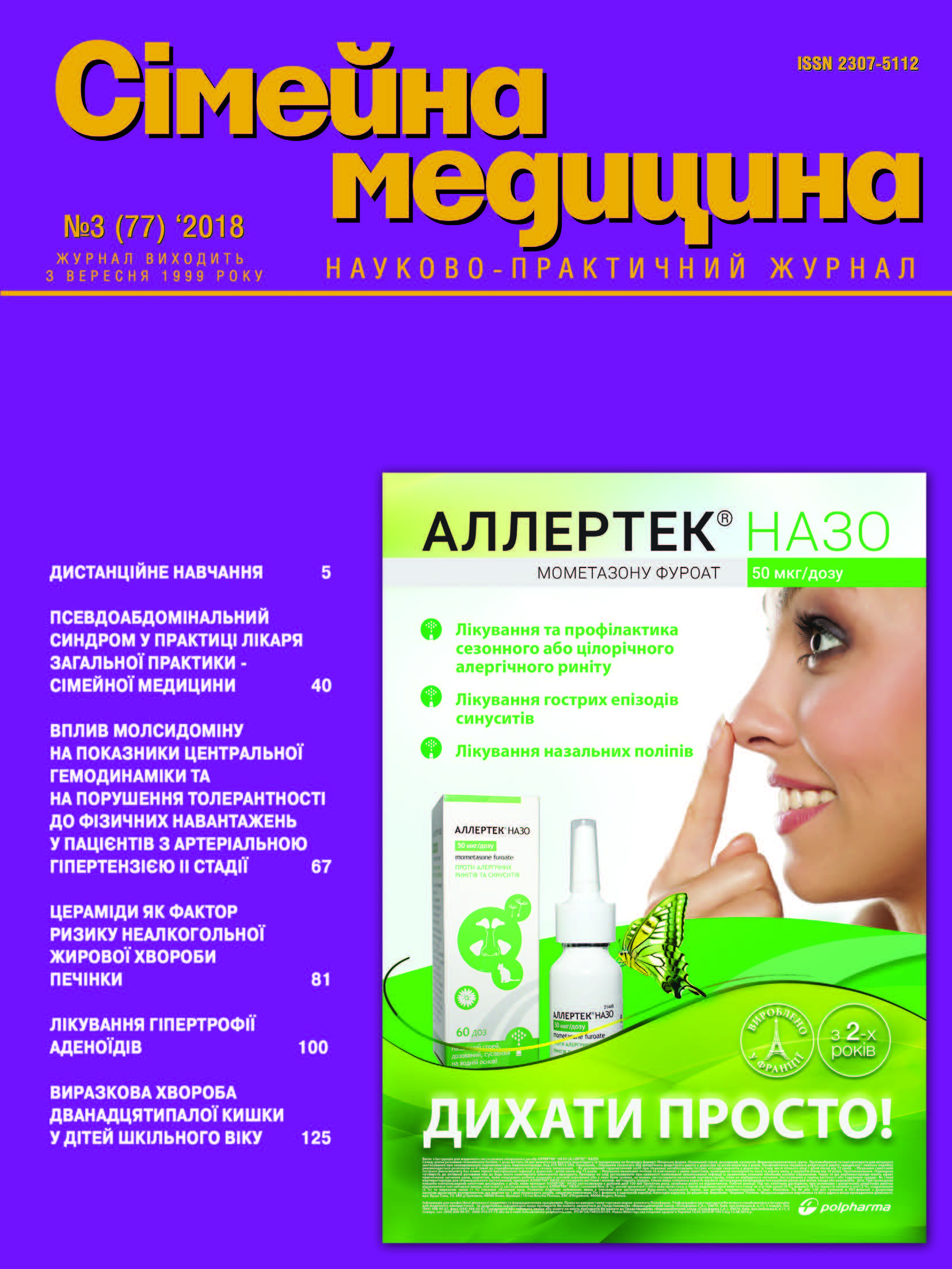The clinical course of chemoresistant pulmonary tuberculosis in the dynamics of treatment depending on the genotypes of M. tuberculosis
##plugins.themes.bootstrap3.article.main##
Abstract
The objective: to determine the features of clinical-laboratory and radiological dynamics in patients with chemoresistant pulmonary tuberculosis depending on genotypes of M. tuberculosis during the intensive phase of treatment.
Materials and methods. In 135 patients with chemoresistant pulmonary tuberculosis were studied the clinical-laboratory and radiologocal dynamics depending on the genotypes of M. tuberculosis during the intensive phase of treatment. The patients were divided into two groups. Genotypes of M. Tuberculosis Beijing family (Beijing group) were found in 67,4% of patients, genotypes of the family LAM, Haarlem, Africanum and genotypes of individual profiles (non-Beijing group) were found in 32,6% of patients. Features of the clinical course dynamics of chemoresistant pulmonary tuberculosis were assessed by the dynamics of intoxication syndrome, closing of the lung parenchyma destruction and cessation of the bacterial excretion during the intensive phase of treatment.
Results. Among patients of theBeijing group compared with no-Beijing group the positive clinical and radiographic dynamics is observed much less frequently. At the same time in the group ofBeijing patients there are significantly fewer people with the cessation of bacterial excretion and cases of healing of the pulmonary parenchyma destruction and more patients with an intoxication syndrome.
Conclusion. Using of the VNTR molecular genetic method allows predicting the course and effectiveness of the treatment of chemoresistant pulmonary tuberculosis.##plugins.themes.bootstrap3.article.details##

This work is licensed under a Creative Commons Attribution 4.0 International License.
Authors retain the copyright and grant the journal the first publication of original scientific articles under the Creative Commons Attribution 4.0 International License, which allows others to distribute work with acknowledgment of authorship and first publication in this journal.
References
Бажора Ю.І., Часникова М.М., Польова С.П., Левицька І.А. Молекулярна епідеміологія туберкульозу // Клінічна та експериментальна патологія. – 2010. – № 2. – С. 138–140. PDF
Дымова М.А., Чередниченко А.Г., Ширшова А.Н. и др. Молекулярные основы возникновения лекарственной устойчивости у Mycobacterium tuberculosis // Вестник Новосибирского государственного университета. Серия: биология, клиническая медицина. – 2012. – № 2. – С. 243–251. PDF
Ляшенко А.А. Методы генотипирования во фтизиатрии // Туберкульоз, легеневі хвороби, ВІЛ-інфекція. – 2015. – № 1 (20). – С. 98–103.
Наказ МОЗ України № 620 від 04.09.2014 «Уніфікований клінічний протокол первинної, вторинної (спеціалізованої) та третинної (високоспеціалізованої) медичної допомоги. Туберкульоз». http://old.moz.gov.ua/ua/portal/dn_20140904_0620.html
Потейко П.И. Клинико-лабораторная характеристика интоксикационного синдрома у больных туберкулезом легких и эффективность детоксикационной терапии: Автореф. дисс. … канд. мед. наук. – М., 1991. – 239 с.
Рогожин А.В. Прогнозування тяжкості перебігу та ефективності лікування хіміорезистентного туберкульозу легень в залежності від різних генотипів мікобактерій туберкульозу: Автореф. дис. … канд. мед. наук: спец. 14.01.26 «Фтизіатрія» / А.В. Рогожин. – К., 2018. – 23 с.
Тодоріко Л.Д., Петренко В.І., Гришин М.М. Резистентність мікобактерій туберкульозу: міфи та реальність // Туберкульоз. Легеневі хвороби. ВІЛ-інфекція. – 2014. – № 1. – С. 60–67.
Туберкульоз в Україні / Аналітично-статистичний довідник за 2004–2014 роки) // головний редактор Толстанов О.К. – К.: Вища школа, – 2015. – 102 с.
Фещенко Ю.І., Мельник В.М. Організація контролю за хіміорезистентним туберкульозом. Виробниче видання. – К.: Здоров’я. –2013. – 704 с.
Фещенко Ю.І, Мельник В.М., Ільницький І.Г. Основи клінічної фтизіатрії: посібник для лікарів (у 2-х томах). – К. – Львів: Атлас, 2011. – 1363 с.
Cowan L.S., Mosher L., Diem L. et al. Variable–number tandem repeat typing of Mycobacterium tuberculosis isolates with low copy numbers of IS6110 by using mycobacterial interspersed repetitive units // J. Clin. Microbiol. – 2002. – Vol. 40. – P. 1592–1602. https://www.doi.org/10.1128/JCM.40.5.1592-1602.2002
Yokoyama E., Hachisu Y., Hashimoto R. et al. Concordance of variable–number tandem repeat (VNTR) and large sequence polymorphism (LSP) analyses of Mycobacterium tuberculosis strains // Infection, Genetics and Evolution: Journal of Molecular Epidemiology and Evolutionary Genetics in Infectious Diseases. – 2010. – Vol. 10, № 7. – P. 913–918. https://doi.org/10.1016/j.meegid.2010.05.013
Joseph B.V., Soman S., Radhakrishnan I. et al. Molecular epidemiology of Mycobacterium tuberculosis isolates from Kerala, India using IS6110–RFLP, spoligotyping and MIRU–VNTRs // Infect. Genet. Evol. – 2013. – Vol. 16. – P. 157–164. https://doi.org/10.1016/j.meegid.2013.01.012
Kwara A., Schiro R., Cowan L.S. et al. Evaluation of the epidemiologic utility of secondary typing methods for differentiation of Mycobacterium tuberculosis isolates // J Clin Microbiol. – 2003. – Vol. 41, № 6. – P. 2683–2685. https://doi.org/10.1128/JCM.41.6.2683-2685.2003
Lu B. Genetic diversity of Mycobacterium tuberculosis isolates from Beijing, China assessed by Spoligotyping, LSPs and VNTR profiles / B. Lu, P. Zhao, B. Liu et al. // BMC Infectious Diseases. – 2012. – Vol. 12. – P. 372. https://dx.doi.org/10.1186%2F1471-2334-12-372





